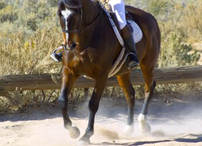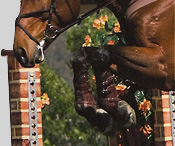



"Building healthy partners"
Healing with Honey


Healing with Honey
Wounds, especially those located below the knee or hock, are notorious sources of frustration for horse owners and veterinarians alike. Understanding how wounds heal is the first step in designing an appropriate wound management plan; choosing a wound dressing that supports the body’s healing mechanisms is second.

1) Immediately after a wound occurs, the body begins its own clean up process. White blood cells migrate into the wound to eliminate foreign material, dead tissue and infectious agents. These cells exit the wound as pus. PUS IS A NORMAL, HEALTHY RESPONSE TO A WOUND IN THE FIRST FEW DAYS. It is important to keep the wound environment moist in this early healing period.
2) Once the wound environment is clean, and dead tissue has been removed, the next healing phase involves rebuilding tissue. The body builds a scaffold of collagen, and delicate new skin cells and blood vessels climb along this framework, repairing the wound defect. During this phase, the wound should be protected from invasion by secondary bacteria, and inflammation should be minimized.
3) Finally, the body spends a long time (months in severe wounds) strengthening and remodeling the fragile young tissue that has filled the
wound. Now it is important to keep the tissue pliable and soft with emollient substances like lanolin.
Our job is to enhance the cleaning and restructuring phases to decrease time to wound closure, improve cosmetic outcome, and avoid problems with exuberant granulation tissue (proud flesh) and wound infection. This is where honey can be uniquely useful. Honey is a biologic wound dressing; while each of its beneficial properties can be found individually in pharmaceutical products, only in honey are they all present together working in cooperation to enhance healing while maintaining a moist wound environment.
How does honey work? The high sugar content of honey draws water out of wounds and reduces edema (fluid swelling). Honey is slightly acidic, which inhibits bacterial growth and acts with the high sugar content to pull water out of bacterial cells. Honey from Manuka trees in New Zealand has additional unique properties. Researchers at the University of Sydney studying the efficacy of Manuka honey in equine wound healing reported that Manuka honey treated wounds had healthier tissue regrowth, which they believe is related not only to its unique antibacterial effects of the honey, but also to Manuka honey’s positive influence on the horse’s immune system.
All types of honey possess beneficial wound healing qualities. The antibacterial activity of most honey’s is due to the presence of hydrogen peroxide, which can be inactivated by enzymes normally present in the healing wound. In contrast, the antibacterial component of manuka honey is a small water-soluble molecule, methylglyoxal, that diffuses easily through the wound environment, and is resistant to enzymatic degradation. This compound also penetrates the biofilm which forms in wounds, protecting bacteria from the action of many systemic and topical antimicrobial agents. Finally, Manuka honey is available in sterile, medical grade preparations. Non-medical grade honey often harbors bacteria that are not dangerous when used for food consumpution, but which can colonize wounds causing secondary bacterial infections. For all of these reasons, medical grade Manuka honey products are the safest, most effective choice for wound treatment.
We recently used Manuka honey on this chronically infected hoof following a hoof wall resection. The healing of the disrupted coronary band was rapid and the integrity of the coronary band was completely restored.
Emergency Vet
(775) 742-2823
Email us at
hidvet@gmail.com

PO BOX 60730
RENO NV 89506
EMERGENCY (775) 742-2823 OFFICE (775) 969-3495
FAX (775) 969-3923




